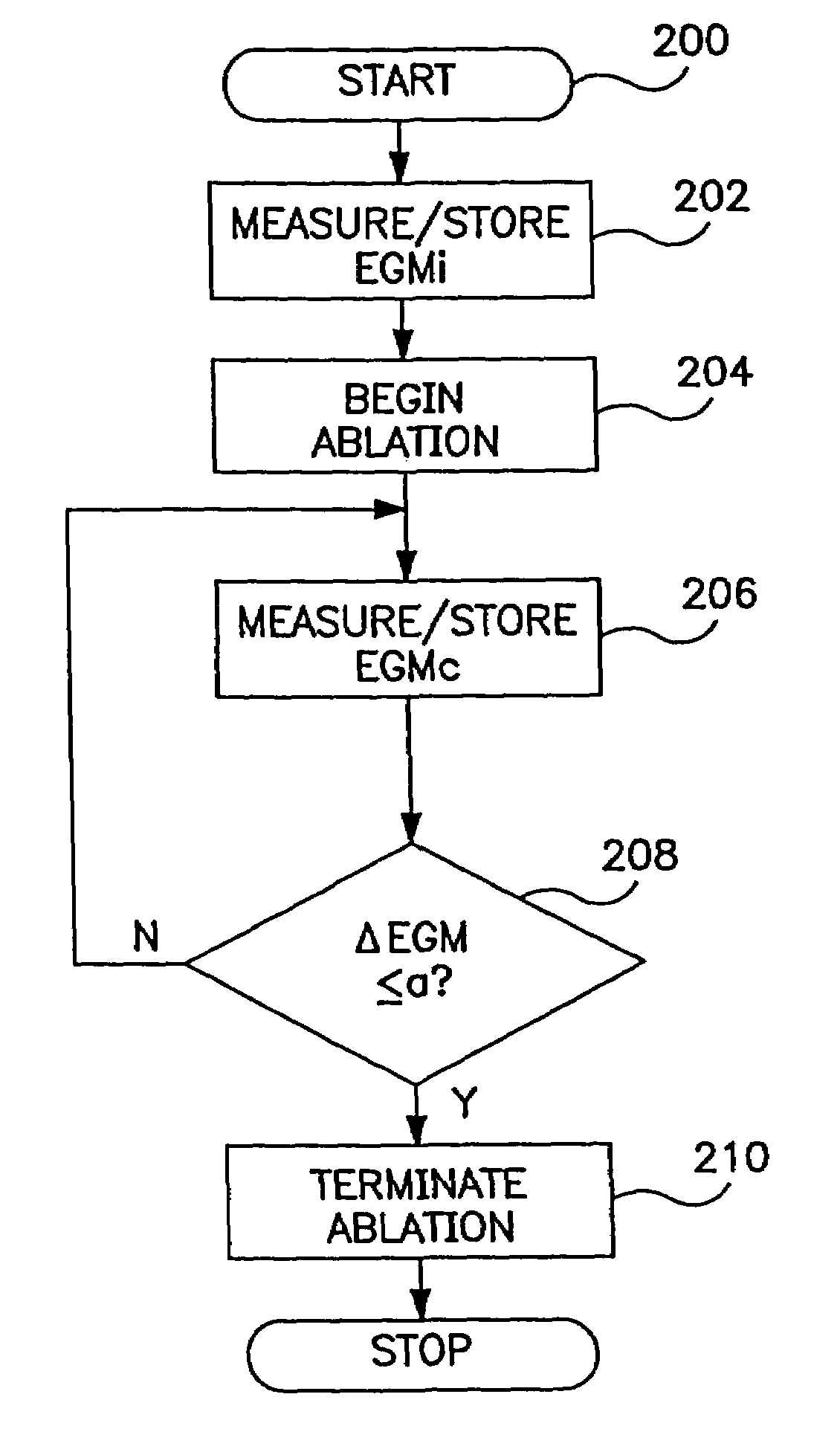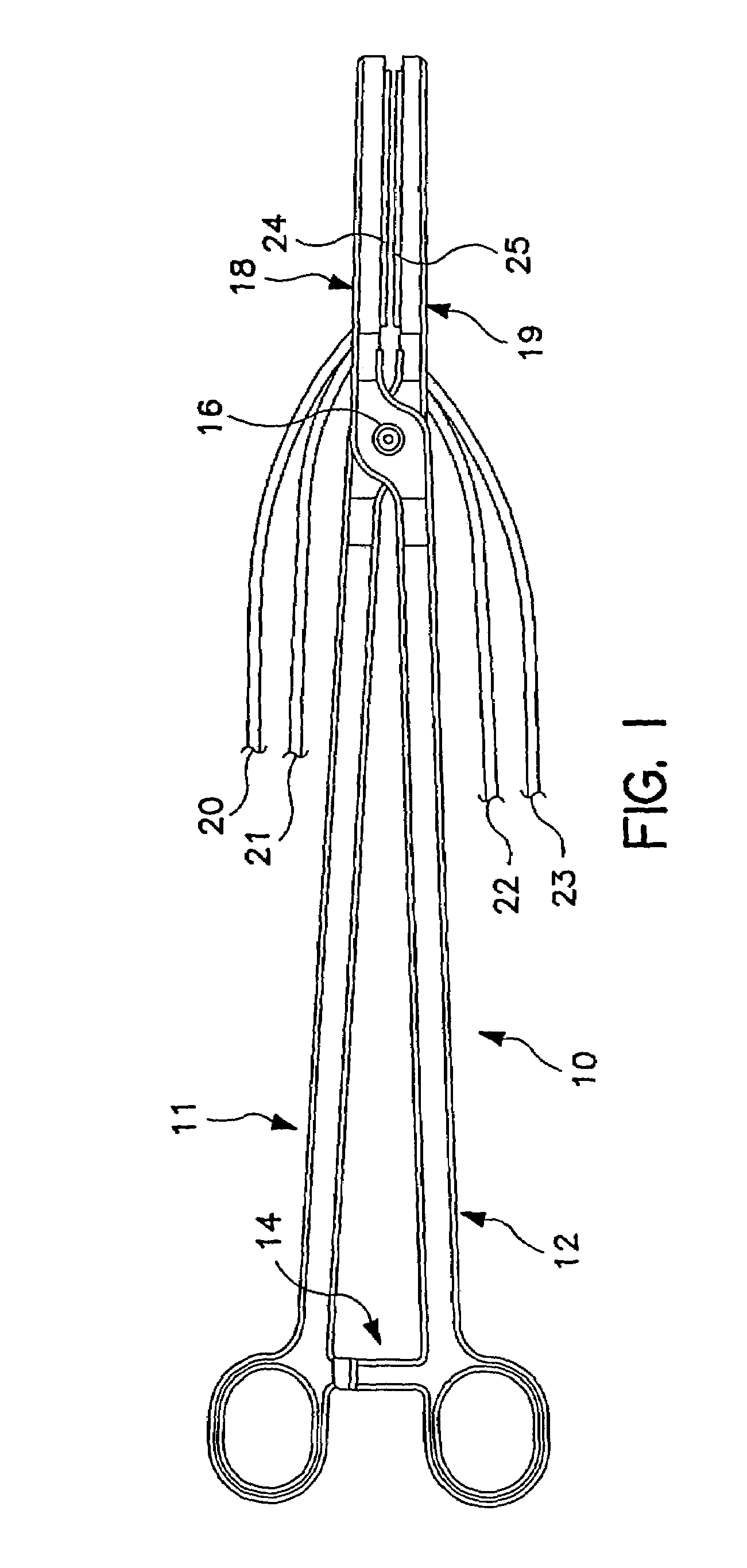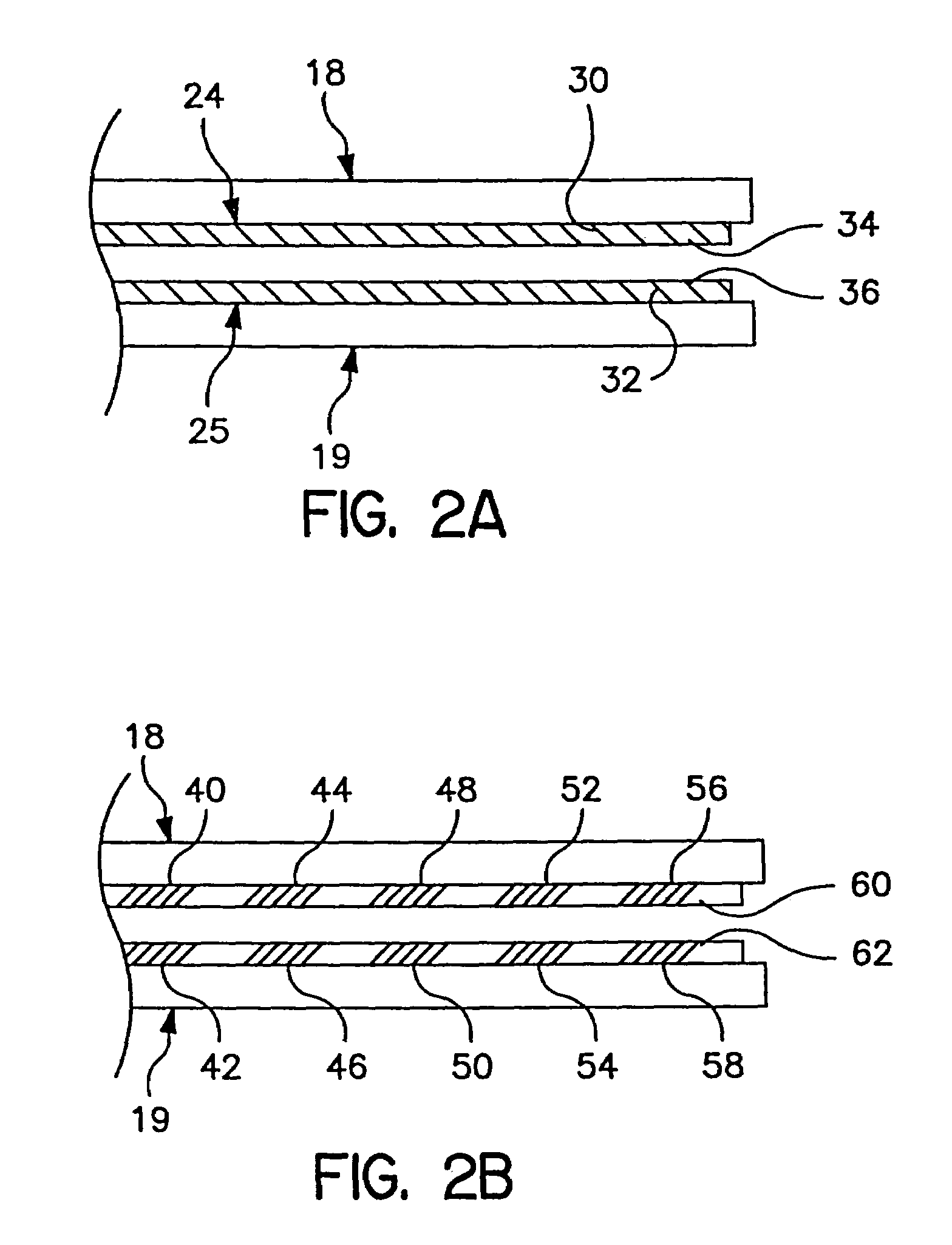Ablation system and method of use
a technology of ablation system and ablation device, which is applied in the direction of catheters, surgical forceps, therapy, etc., can solve the problems of quite complex surgical maze procedures, and achieve the effect of reducing increasing the power of applied ablation energy
- Summary
- Abstract
- Description
- Claims
- Application Information
AI Technical Summary
Benefits of technology
Problems solved by technology
Method used
Image
Examples
first embodiment
[0024]FIG. 2a shows an electrode arrangement for a hemostat generally as illustrated in FIG. 1. Illustrated components correspond to identically numbered components in FIG. 1. In this embodiment, electrodes 24 and 25 take the form of elongated coil electrodes 30 and 32, mounted around porous tubes 34 and 36, through which saline or other conductive fluid is delivered. The arrangement of the electrodes may also be reversed, for example placing coils 30 and 32 within elongated porous tubes 34 and 36, to accomplish a similar result. Alternatively, any other arrangement for providing an elongated electrode and delivery of saline solution along the length thereof may be substituted. The particular configuration of the electrode is not critical to the present invention. For example, irrigated electrodes corresponding to those described in U.S. Pat. No. 6,096,037 issued to Mulier, et al., U.S. Pat. No. 5,876,398 issued to Mulier, et al., U.S. Pat. No. 6,017,378 issued to Brucker, et al or ...
second embodiment
[0039]FIG. 6 is a functional flow chart illustrating the operation of a device as in FIG. 4, according to the present invention. The flow chart of FIG. 6 illustrates operation of the device of FIG. 4 to control provision of R-F energy to an individual electrode or electrode pair. In the event that multiple electrodes or electrode pairs are employed, the control methodology of FIG. 6 would be applied to each electrode or electrode pair individually, as discussed in more detail below in conjunction with FIGS. 10 and 11.
[0040]The flow chart of FIG. 6 illustrates a method of assessing transmurality and terminating delivery of ablation energy to an electrode or an electrode pair responsive to detection of a specified drop in electrogram amplitude, e.g. a 75% drop in conjunction with detection of an electrogram amplitude plateau. Following the detection of the required amplitude drop and plateau, the device may wait a defined time period to assure completion of the lesion and then termina...
PUM
 Login to View More
Login to View More Abstract
Description
Claims
Application Information
 Login to View More
Login to View More - R&D
- Intellectual Property
- Life Sciences
- Materials
- Tech Scout
- Unparalleled Data Quality
- Higher Quality Content
- 60% Fewer Hallucinations
Browse by: Latest US Patents, China's latest patents, Technical Efficacy Thesaurus, Application Domain, Technology Topic, Popular Technical Reports.
© 2025 PatSnap. All rights reserved.Legal|Privacy policy|Modern Slavery Act Transparency Statement|Sitemap|About US| Contact US: help@patsnap.com



